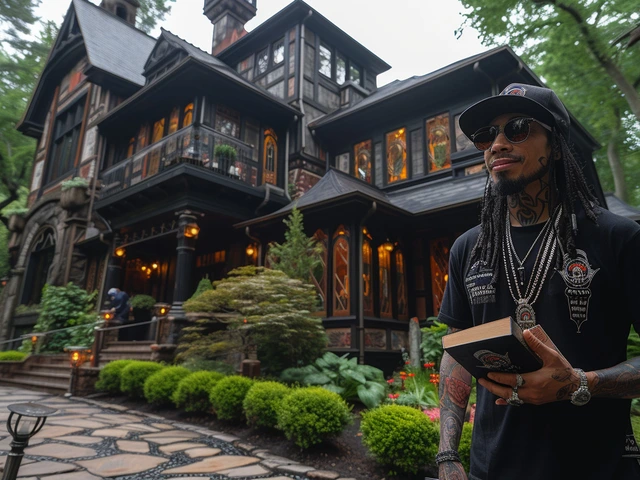The Intricacies of Tudor Architecture
The beauty of architecture, quite similar to human beings, lies in its evolving nature. A classic example, and the subject of today’s discourse, is the revival of Tudor architecture. Some of you might think: "Harrison, isn't this style centuries old?" Indeed it is, but like a character from an F. Scott Fitzgerald novel, Tudor architecture is brimming with a timeless charm that encourages its rebirth time and time again. So, allow me to take you on a journey through the fascinating world of Tudor architecture.
Tudor Architecture: A Brief History
The story of Tudor architecture is like a brilliant Netflix screenplay. It's a gripping tale that takes you back to England in the late 15th century and early 16th century, the Tudor period, hence the name. Derived from Medieval and Renaissance inspirations, Tudor architecture, like my son Cosmo's Lego masterpieces, was characterized by its asymmetry, jettied (overhanging) stories, lavish half-timbering, and distinctive diamond-shaped windowpanes. And let's not forget those beautifully steeped roofs, a signature of the Tudor style architecture.
Tudor Architecture: The Resurrection
The magic of the Tudor style never really disappeared; it was merely in a centuries-long slumber, waiting for the right moment to awaken. And awaken it did, not in England, but across the Atlantic in America between 1890s to 1940s. Yes, folks! The revival was a decidedly American phenomenon, possibly because we love anything and everything classic and grand. The architectural beauty of yesteryear fused with the comfort and utility of modern construction made the perfect formula for revival. The monotonous contemporary designs led to the yearning for styles that echoed the charm of the past.
Elements of the Rebirth
So how does one define a Tudor Revival style home? Well, it’s like recognizing Adriana, my wife, in a sea of thousands; there are certain elements so distinct, they are immediately noticeable. This style is characterized by steeply pitched roofs, usually in multiple gables, decorative half-timbering, and tall, narrow windows with small windowpanes that create an almost storybook appearance. Not unlike the quirky sketches my daughter, Aria likes to draw. And do not forget the massive chimneys. These are often topped with decorative chimney pots and are a strong characteristic feature of Tudor Revival architecture.
Bringing Tudor into the 21st Century
As the 21st century unfolds, the revival of Tudor architecture stands unbeaten, with many architects borrowing elements from the style to create modern homes. Can one incorporate Tudor features into a modern home without making it look like a movie set from "The Tudors"? The answer is a resounding "YES". Modern Tudor design marries the intricate detailing of Tudor architecture with the elegance and comfort of modern living. This balance works just like my and Adriana’s relationship - a perfect blend of tradition and modernity!
Tips to Incorporate Tudor Elements in a Modern Home
The revival of Tudor architecture can feel intimidating. But don't worry, Harrison is here to help. The secret is to keep things balanced. Wood paneling or stucco can give the half-timbered feel without going overboard. Inspired from the signature Tudor style, dropped wooden beams are another way to incorporate this element. The use of stone is another way to replicate the look, so integrate it as much as possible; in your fireplace, for example. Curved doorways and windows can be included to add an air of authenticity. Remember, every little detail matters in perfecting the modern version of Tudor style.
Tudor Architecture - A Story Worth Remembering
Throughout my foray into the multifaceted world of architecture, the Tudor revival stands apart as a testament to architectural resilience, surviving the test of centuries. In a world fascinated by the ultramodern, the return of the Tudor architecture is like the phoenix rising from the ashes, a testimony to the continuing reverence for the old-world charm. Like an enduring love story, Tudor architecture captures the magic of an era gone by, while beautifully adapting to the demands of the current times and staying relevant.
Final Thoughts
The revival of Tudor architecture is a reminder of the symphony that a marriage of the old and the new can create. As we continue to negotiate our way through the 21st century homeowners are no longer satisfied with the ordinary, and Tudor architecture offers a degree of character and charm that modern designs often lack. This resurrection certainly proves one thing: no matter where we go, we always come back to our roots. After all, home isn’t just a physical structure built with mortar and bricks; it’s also a feeling, a connection to the past, and a doorway to the memories we hold dear.




Leave a Comments